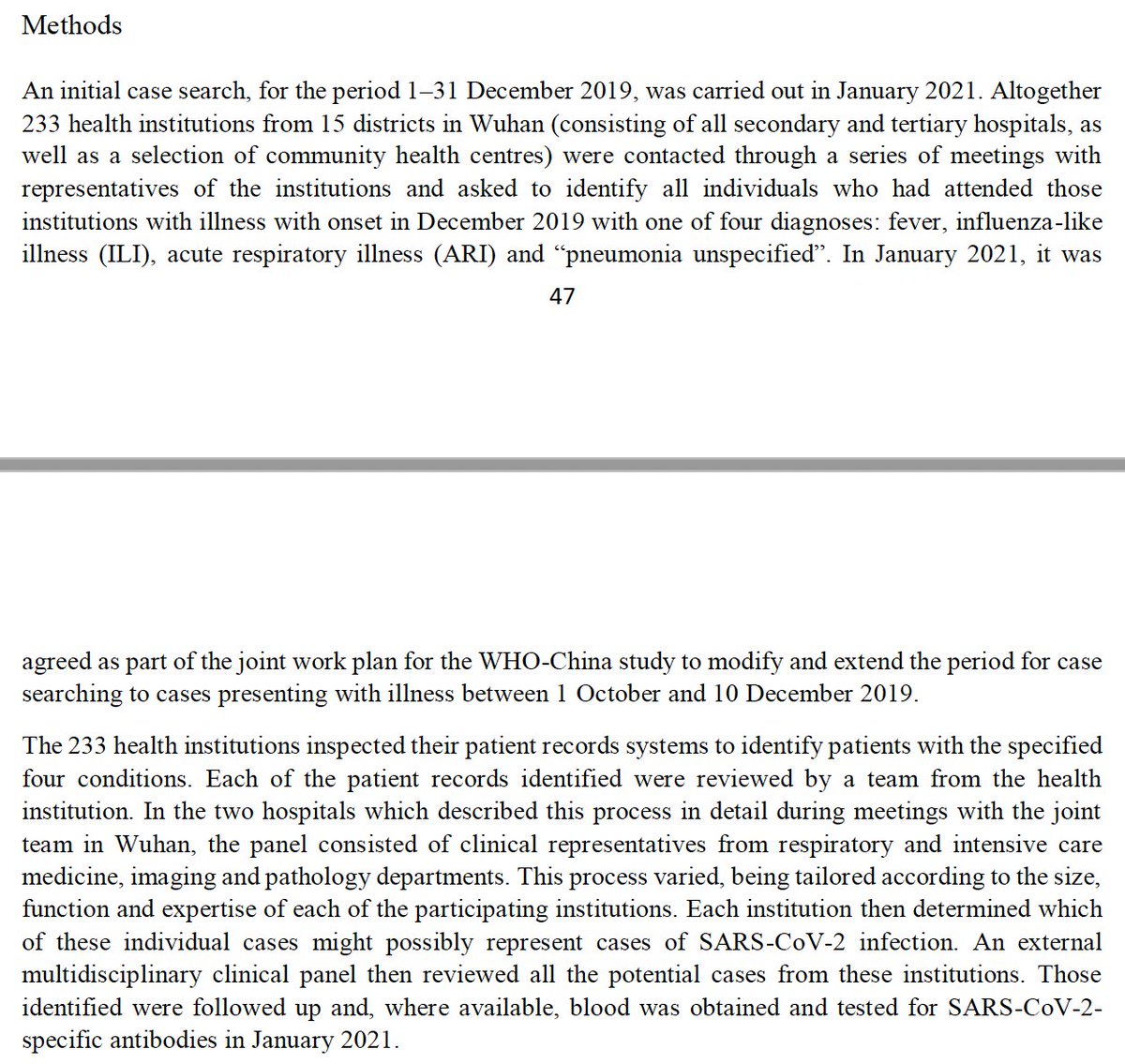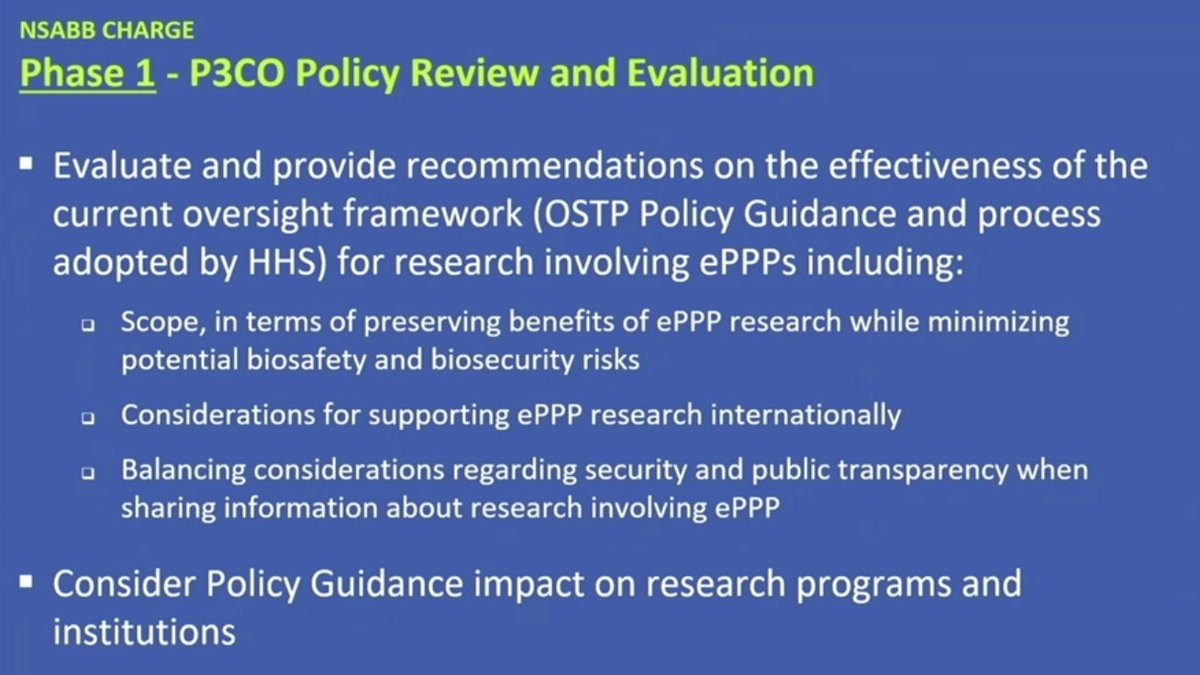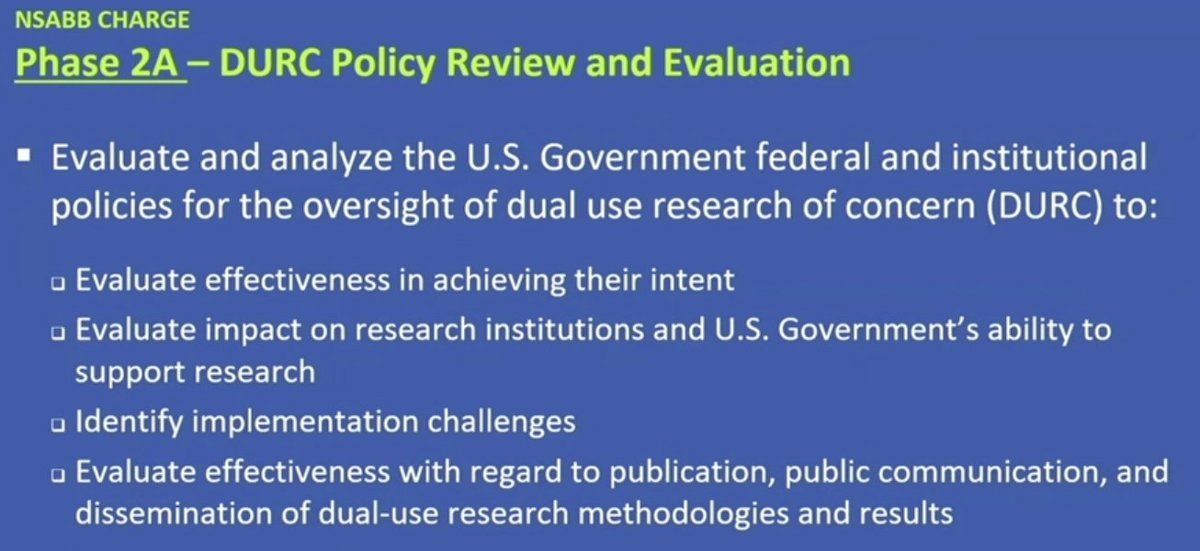
#OriginOfCovid reporting in early 2022 is a repeat of what happened in early 2020.
Some scientists, including some from 2020 #ProximalOrigin, put out a paper claiming certainty of a natural origin.
Reporters, incl some from 2020, rush out headlines amplifying this claim. /20
Some scientists, including some from 2020 #ProximalOrigin, put out a paper claiming certainty of a natural origin.
Reporters, incl some from 2020, rush out headlines amplifying this claim. /20
I get that people’s bandwidths are stretched right now with the pandemic and the war in Ukraine.
But weren’t any lessons learnt from 2020 about responsible COVID-19 reporting?
Fool me once, shame on you. Fool me twice…
But weren’t any lessons learnt from 2020 about responsible COVID-19 reporting?
Fool me once, shame on you. Fool me twice…
After reading the preprints, I quickly identified major scientific issues or misunderstandings undermining the main claims of the highly reported Worobey et al. preprint.
I will address the 11 key claims of this preprint listed in their discussion.
zenodo.org/record/6299116…
I will address the 11 key claims of this preprint listed in their discussion.
zenodo.org/record/6299116…
(1) Potential animal hosts of the virus were sold at the market in late 2019.
This has been clear from a study published in June 2021 and was assumed in early 2020.
The outstanding question is how many animal hosts were at the market in late 2019?
nature.com/articles/s4159…
This has been clear from a study published in June 2021 and was assumed in early 2020.
The outstanding question is how many animal hosts were at the market in late 2019?
nature.com/articles/s4159…
(2) A stall selling raccoon dogs yielded 5 SARS2+ surface samples including from an epilator & a cage in an inner room.
imo this is the only new piece maybe in favor of natural origin. But because sampling was done in Jan 2020, unclear if contamination came from animal or human.
imo this is the only new piece maybe in favor of natural origin. But because sampling was done in Jan 2020, unclear if contamination came from animal or human.
(3) SARS2+ surface samples were concentrated in the corner of the market where live mammals were sold.
This claim is made on incomplete data. The preprint acknowledges they don’t know how many samples were taken per stall. Chinese CDC has this data but didn’t make this claim.
This claim is made on incomplete data. The preprint acknowledges they don’t know how many samples were taken per stall. Chinese CDC has this data but didn’t make this claim.
(4) Most vendor cases occurred in Western section where live mammals were sold.
Western section is ~4 US football fields in size. So, this point is moot. CCDC did not observe trend between SARS2+ surface samples or Covid cases and the type of goods sold.
researchsquare.com/article/rs-137…
Western section is ~4 US football fields in size. So, this point is moot. CCDC did not observe trend between SARS2+ surface samples or Covid cases and the type of goods sold.
researchsquare.com/article/rs-137…
(5-6) A large proportion of the earliest known cases were people who were linked to the market. This link is not due to ascertainment bias.
This is countered by multiple official and non-official reports, including the China-WHO report whose data the preprint reverse engineered.
This is countered by multiple official and non-official reports, including the China-WHO report whose data the preprint reverse engineered.
After just the first 4 market cases were reported on Dec 29, Wuhan CDC retroactively screened for Dec 2019 cases with links to the market, at hospitals near the market, and in the market’s neighborhood. Search criteria was not changed until Jan 18.
🧵:
🧵:
https://twitter.com/Ayjchan/status/1499463708518625280
(7) Both early SARS2 lineages A & B were circulating near the market, suggesting multiple spillover.
This is speculative because all early market cases were lineage B. The only lineage A surface sample at the market was collected after the outbreak had exploded in the city.
This is speculative because all early market cases were lineage B. The only lineage A surface sample at the market was collected after the outbreak had exploded in the city.
By Jan 2020, when the market was sampled for contamination by SARS2, both lineages had escaped the city & likely even China.
As @jbloom_lab pointed out, a family visiting Wuhan Dec 29-Jan 4, no known link to the market, was infected by lineage A SARS2.
sciencedirect.com/science/articl…
As @jbloom_lab pointed out, a family visiting Wuhan Dec 29-Jan 4, no known link to the market, was infected by lineage A SARS2.
sciencedirect.com/science/articl…
(8-10) Spatial pattern of Dec 2019 cases, even those with no history of exposure at the market, being close to the market cannot be explained by Wuhan population density patterns. Only by Jan/Feb did spatial pattern reflect pop density.
Please see tweets addressing points 5-6.
Please see tweets addressing points 5-6.
(11) Other Wuhan sites are as likely to be the site of an initial cluster as Western section of the market if #OriginOfCovid was not wildlife trade.
As explained in 🧵, it’s unclear if other early clusters were missed because of the biased search for cases at/near the market.
As explained in 🧵, it’s unclear if other early clusters were missed because of the biased search for cases at/near the market.
It is unclear whether an animal or human brought the virus into the market because current evidence is consistent with both scenarios.
The market environment was particularly conducive for a superspreader event. >50,000m2, 678 stalls in extremely crowded condition...
The market environment was particularly conducive for a superspreader event. >50,000m2, 678 stalls in extremely crowded condition...
Moreover, the market was centrally located where metro lines intersect, located in one of Wuhan’s high population density neighborhoods, flanked by the Wuhan CDC and 3 key hospitals where early Covid cases had been found or transferred to.
The Chinese CDC preprint, based on a more complete dataset than that used in Worobey et al.’s analysis, wrote “the market might have acted as an amplifier due to the high number of visitors every day, causing many initially identified infection clusters”
researchsquare.com/article/rs-137…
researchsquare.com/article/rs-137…
Dispositive evidence for a natural origin quickly found & shared internationally in the first SARS outbreak are missing for SARS2 – namely, an animal host, animal versions of the virus & antibody evidence of SARS-like viruses circulating in the local animal trading community.
I’m worried that this preprint will be published at a top research journal if its peer reviewers are unaware that half of its claims (5,6,8-11) are based on the author’s lack of awareness of how Dec 2019 cases were identified with a bias for the market…
… and the rest of its claims (1-4,7) are based on incomplete data.
The scientific thing to do is for the authors to ask for this data to be shared by the Chinese CDC and the animal sales study authors.
Not to assume that the data supports their claims.
The scientific thing to do is for the authors to ask for this data to be shared by the Chinese CDC and the animal sales study authors.
Not to assume that the data supports their claims.
Unfortunately, based on what happened in 2020, I expect that the Worobey et al. preprint has likely already been touted as proof of a natural #OriginOfCovid at top news organizations, research journals, academic institutions, and even political and intelligence circles.
Feel free to tag any scientists or journalists onto this thread if they're convinced of a natural #OriginOfCovid after reading the recent preprints or, more likely, other reporters' articles.
I'm sure they can make it through 20 tweets if they read the 150+ pages of preprints.
I'm sure they can make it through 20 tweets if they read the 150+ pages of preprints.
A senior author of the preprint is confused. The selection criteria favoring the market was not the one used in January 2021 by the China-WHO team to retrospectively search for suspected cases. @MarionKoopmans would know since she was on the team. 
https://twitter.com/Ayjchan/status/1499849694062731270

China-WHO #OriginOfCovid team had new criteria, see page 47 of their report:
Any case with symptom onset in Dec 2019 with any of these diagnoses: fever, influenza-like illness (ILI), acute respiratory illness (ARI) or “pneumonia unspecified”.
Any case with symptom onset in Dec 2019 with any of these diagnoses: fever, influenza-like illness (ILI), acute respiratory illness (ARI) or “pneumonia unspecified”.

This contrasted with the market-biased search criteria that Wuhan CDC and other investigators used to retrospectively identify early cases in Dec 2019, and that doctors used to report cases in early Jan 2020.
https://twitter.com/Ayjchan/status/1499463708518625280
It's right here in the report published by the Chinese CDC in January 2020.
After hearing of the first 4 cases from the market on Dec 29, they immediately went looking for more cases, retrospectively or actively, linked to the market.
ncbi.nlm.nih.gov/labs/pmc/artic…
After hearing of the first 4 cases from the market on Dec 29, they immediately went looking for more cases, retrospectively or actively, linked to the market.
ncbi.nlm.nih.gov/labs/pmc/artic…
It is corroborated by the China-WHO report, which again Dr Koopmans would be familiar with, since she was on the team.
On page 125 of annexes, they state that after the 4 cases from the market were reported, the search focused on cases in/near the market. who.int/docs/default-s…
On page 125 of annexes, they state that after the 4 cases from the market were reported, the search focused on cases in/near the market. who.int/docs/default-s…

If still unconvinced, take a look at a photocopy of the instructions given to doctors in Wuhan at the start of 2020. These said the case must meet at least 1 epidemiological criteria - 3 of these are market related, the last is a link to known patients. archive.ph/iMQVD 

If you're starting to search for Covid cases with disease onset in Dec 2019, only after hearing of 4 market cases on 29 Dec, it means the cases have to be identified retrospectively or as they are admitted into hospitals in early Jan.
And if your search criteria, as shown in these reports, insists on a link to the market, focusing on cases at hospitals near the market or in the neighborhood of the market - then it should not surprise anyone that the identified Dec 2019 cases all cluster around the market.
Even the best scientists make mistakes in their analysis & manuscripts. Especially when the manuscript is still just a preprint.
What makes this situation slightly funny is that the media already went to town reporting their strong conclusions which were based on a mistake.
What makes this situation slightly funny is that the media already went to town reporting their strong conclusions which were based on a mistake.
What is sad is that most of the reporters who rushed out headlines on these preprints most likely will not be correcting their reports or writing up 2nd reports to clarify the error.
So now the public is stuck with misinformation spread by top scientists and journalists.
So now the public is stuck with misinformation spread by top scientists and journalists.
Where is the scientific and journalistic accountability?
Some additions here based on questions put to me:
Why do the unlinked Dec 2019 covid cases also cluster around the market?
It's because the Wuhan CDC searched not only at the market but hospitals near the market and the neighborhood of the market.
Why do the unlinked Dec 2019 covid cases also cluster around the market?
It's because the Wuhan CDC searched not only at the market but hospitals near the market and the neighborhood of the market.
https://twitter.com/Ayjchan/status/1499854280412573698
How many early cases were known before the market-biased search started? Why did these cluster around the market?
Only about a dozen cases were known before the market-biased search started. These cases were at the 2 central Wuhan hospitals situated close to the Huanan market.
Only about a dozen cases were known before the market-biased search started. These cases were at the 2 central Wuhan hospitals situated close to the Huanan market.

Essentially, the discovery of market cases at hospitals near the market led to a market-biased retrospective search targeting the market, hospitals near the market & the market's neighborhood.
Cases identified after these first dozen or so cases would've been affected by bias.
Cases identified after these first dozen or so cases would've been affected by bias.
A more complicated question that was put to me is why did the Chinese investigators limit their search to the market and its vicinity like this?
This is explained in their reports, including the China-WHO report. They thought it was a repeat of the first SARS outbreaks...
This is explained in their reports, including the China-WHO report. They thought it was a repeat of the first SARS outbreaks...
At the time, many early cases were people who directly handled the sick animals, like chefs, waitresses or food delivery people. The virus in the first weeks of spilling over was not particularly efficient at transmitting from human to human. It had to pick up adaptive mutations.
Scientists investigating the origin of SARS1 had gone to the markets, where actually the earliest cases were not found at, and discovered a range of infected animal species, carrying animal versions of the virus. Close but not identical (~99.5% match).
When SARS1 broke out again in late 2003, the restaurant workers where the infected civets were kept (and later discovered) had been infected but did not appear to have transmitted the virus to other people.
So if you work with this premise that the virus was not expected to be readily transmitting from human to human in December 2019, you can see why the investigators thought it would be best to focus their search on the market and its vicinity.
Investigators didn't expect that the virus was already explosively competent at infecting and transmitting among humans in Dec 2019, and that no infected animals or animal variants of the virus would be found at the market.
They didn't think to search the entire city uniformly.
They didn't think to search the entire city uniformly.
Keep in mind that it wasn't until Jan 20, 2020 that the Chinese authorities let on that the virus was transmitting from human to human.
Even expert investigators were working with very incomplete information at the time.
Even expert investigators were working with very incomplete information at the time.
It took about 3 months before scientists noticed...“There has been no substantial changes in the virus in the three months of the pandemic, indicating that the virus is well adapted to humans.” - Stanley Perlman, virologist at U of Iowa
h/t @TheSeeker268
theguardian.com/world/2020/apr…
h/t @TheSeeker268
theguardian.com/world/2020/apr…
Even the Proximal Origin authors had caught on that the virus was already adapted or pre-adapted for human hosts - although they began to deny this observation once it seemed to suggest an unnatural #OriginOfCovid
nature.com/articles/s4159…
nature.com/articles/s4159…

• • •
Missing some Tweet in this thread? You can try to
force a refresh












